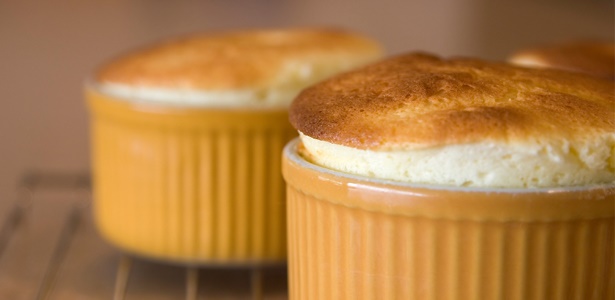As a child we ate cheese soufflé at least once a week. Not sure how it became a staple in our house but it featured up there with hake and smoor and a particularly splendid asparagus tart that my mom favoured. As a result the cheese soufflé creates a warm, fuzzy nostalgic feeling whenever I eat it.
For obvious reasons the soufflé is held up as the pinnacle of traditional French cuisine, and the stumbling block of inexperienced cooks the world over. Here are a few top tips to mastering the soufflé.
Sweet or savoury
Soufflés can be sweet or savoury. A sweet soufflé has a base of crème patisserie and a savour soufflé is based on a béchamel sauce. Stiffly beaten egg whites are then folded into the base and the soufflé is baked at a high temperature. This causes the air in the egg white to expand causing the soufflé to rise.
Adding flavours
The soufflé can be flavoured in any number of ways. Cheese soufflé is the classis, but savoury soufflés may also have additional flavour elements like chopped vegetables, meats or fish and herbs. Different cheeses are also used to change the flavour profiles. Sweet soufflés can be fruit based, chocolate, vanilla or coffee and/or nutty.
Separating eggs
There are a million ways to separate an egg. For me, the easiest is to use the two halves of the egg shell, passing the yolk carefully between them and letting the egg white drop down into a bowl below. Other methods involve an egg separator (a cute gadget that does the work for you) using your hands and letting the egg white slip through your fingers as you cup the yolk, or even using a plastic bottle to suck up the egg yolk.
How to whip egg whites
Egg whites should always be beaten in a glass or ceramic bowl. Plastic bowls may have a greasy residue that stops the whites from reaching their maximum fluffiness. Always use clean dry utensils. Add in a pinch of salt and cream of tartar to stabilise the whites and beat until you reach stiff peaks. The test for stiff peak is holding the bowl upside down and the whites should stay exactly where they are. If they slip out onto the ground (or worse onto your head) then they weren’t at stiff peak.
Folding in
This means mixing in the stiff egg white, carefully in a figure-of-eight, folding action so as not to knock all the air out. Use a spatula or metal spoon for this step not a wooden spoon. Cut into any large egg white lumps to break them up, scooping down to the bottom of the bowl to get an evenly mixed result. Do not over mix. Start by folding in one third of the egg white first, to lighten the mixture, then fold in the remaining whites.
Preparing your dish
Soufflés can be prepared in a large soufflé dish or in individual ramekins. Both have straight vertical sides that help the soufflé to rise straight upwards. Prepare the soufflé or ramekins by buttering them well and then dusting either with finely grated Parmesan cheese or breadcrumbs (for savoury) or castor sugar (for sweet).
Top hats
To maximise the height of your soufflé, fill the ramekin or dish to the top, then run your finger around the rim, creating a slight separation between the sides and the soufflé mixture. This helps the soufflé to rise straight up and well above the sides of the dish. Some recipes may even call for a foil or baking paper collar to help support the soufflé while it is rising. This would be removed before serving the soufflé.
Twice baked soufflés
A twice baked soufflé is an unctuous concoction, perhaps invented to use up left over soufflés. A soufflé will sink back down once it is removed from the oven in as the hot air cools and escapes. But it can be revived by turning it out of its ramekin into an oven proof dish, drizzle it with cream and cheese and bake it again for a delicious cheesy dish.
For a delicious Gruyère soufflé recipe, click here.

